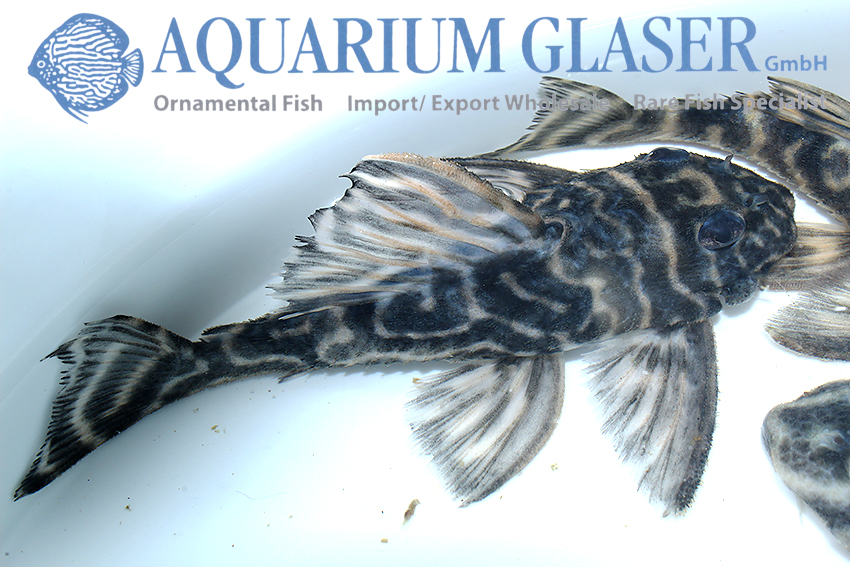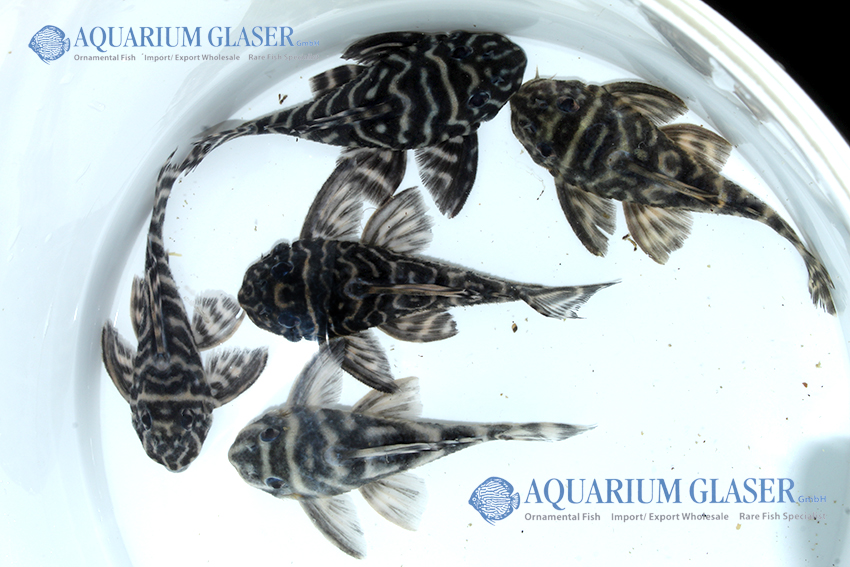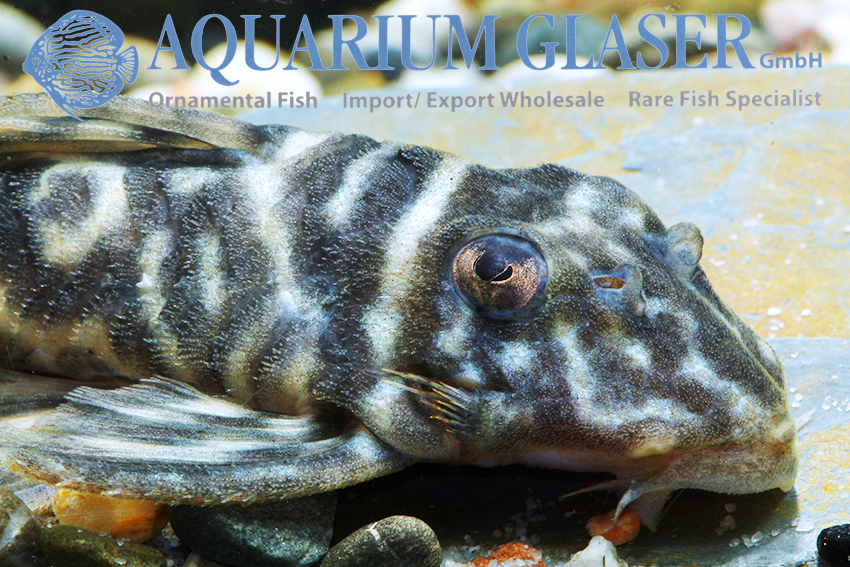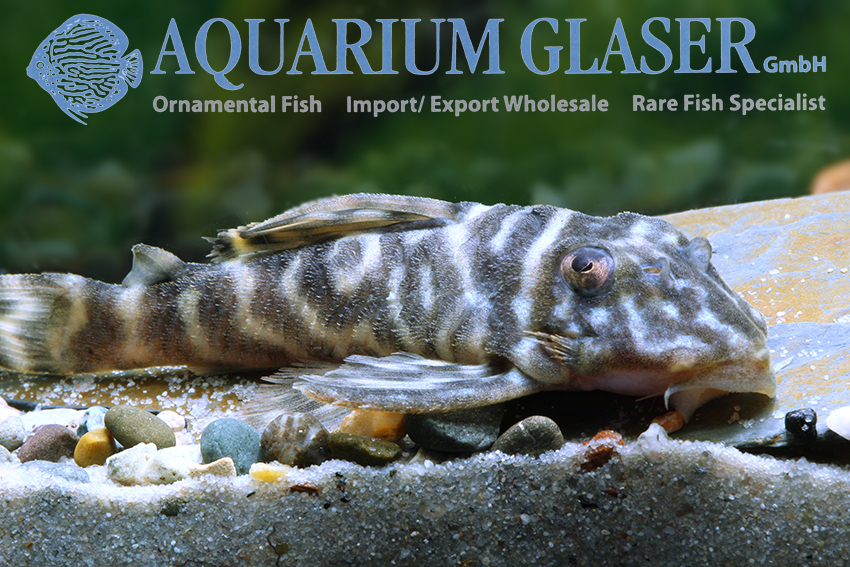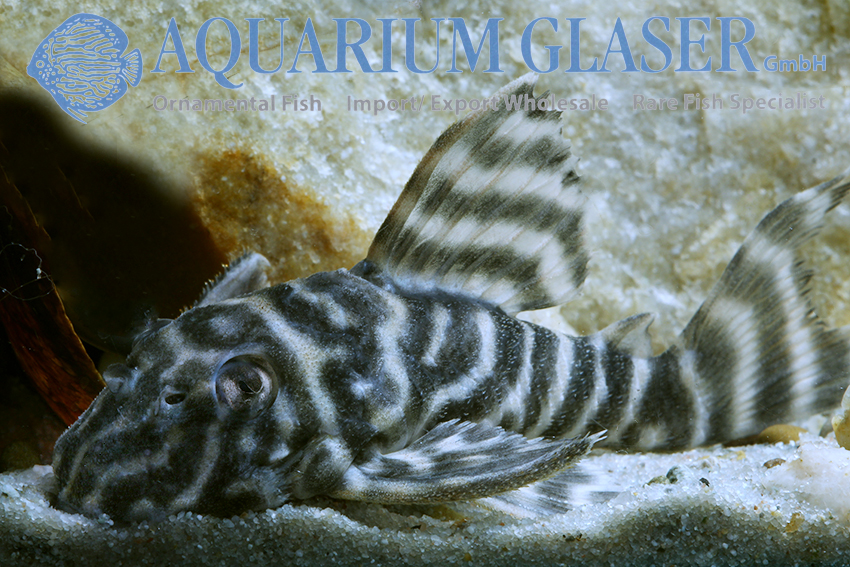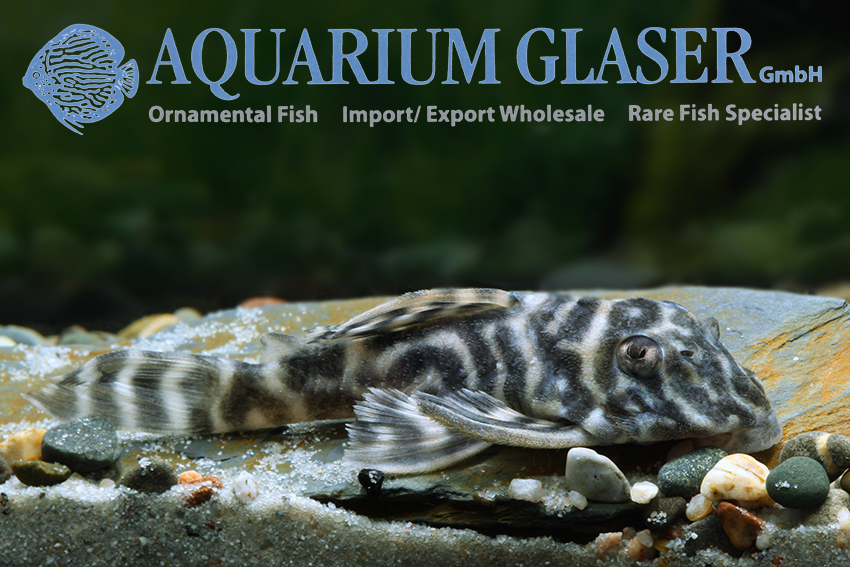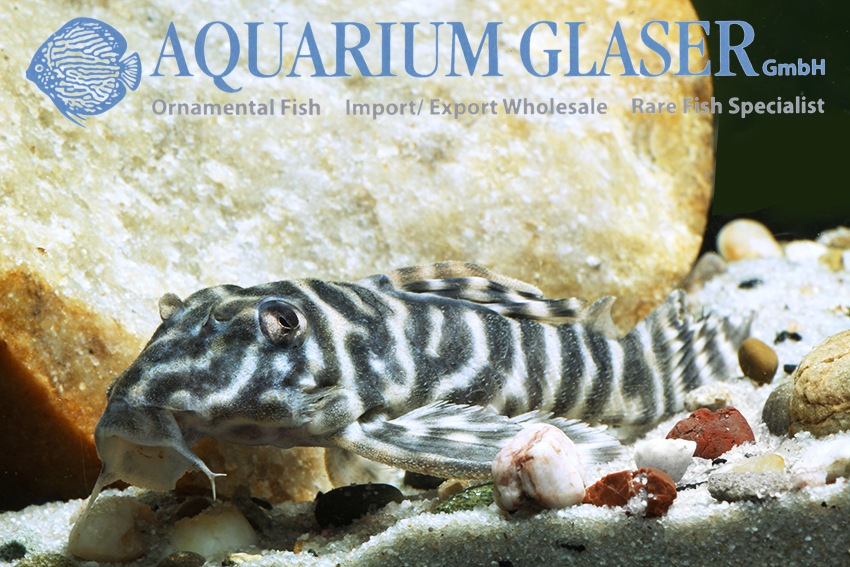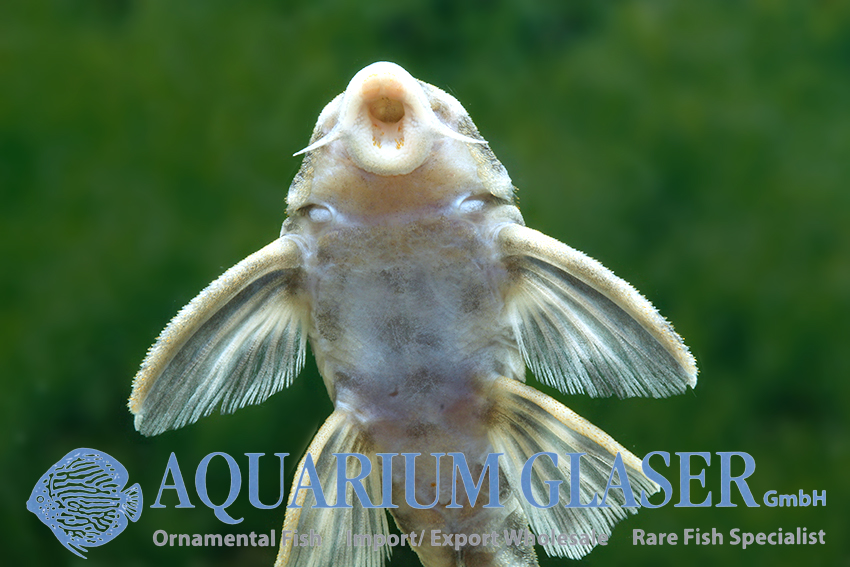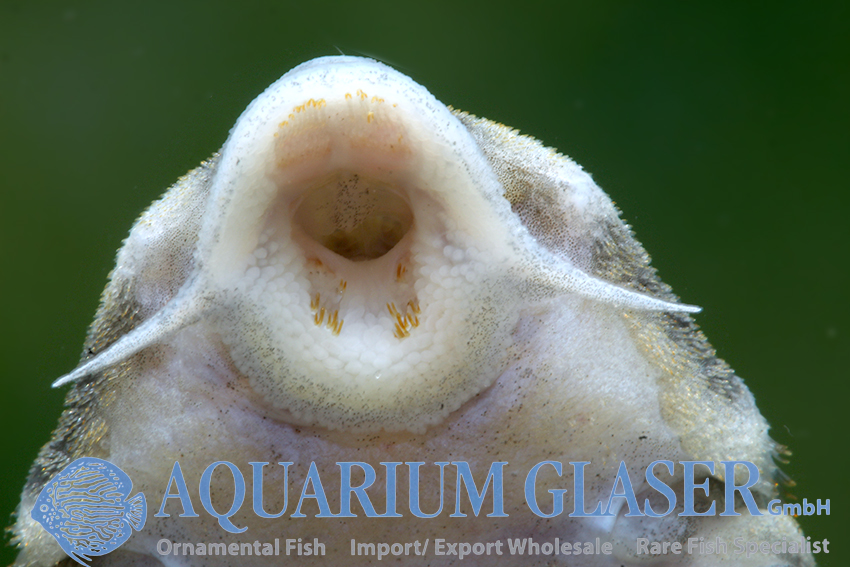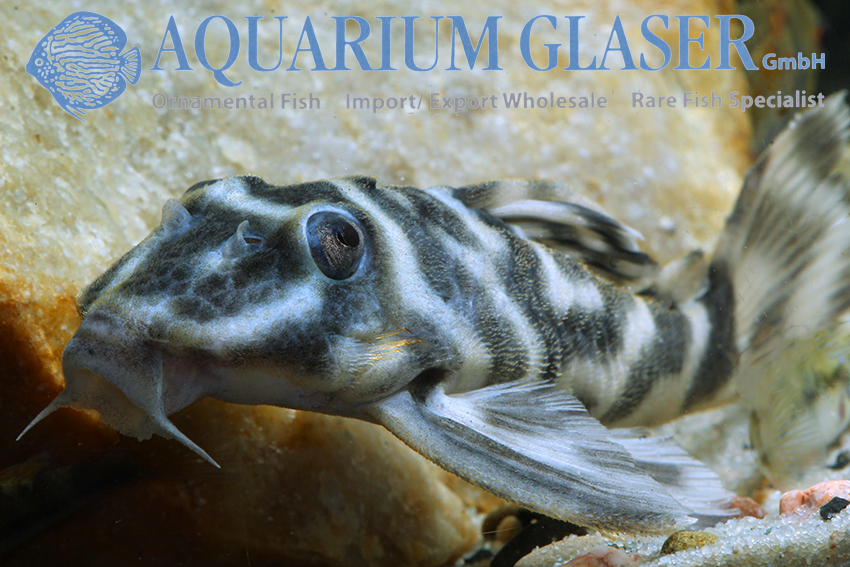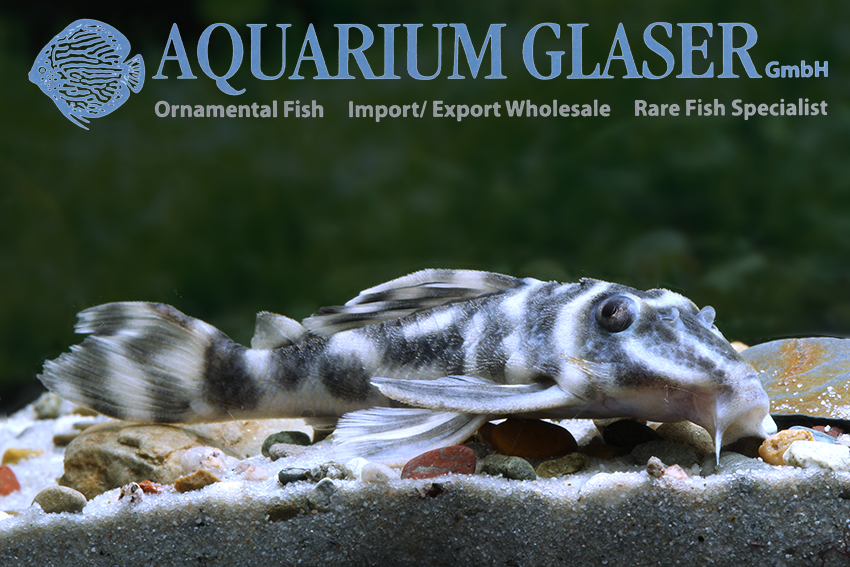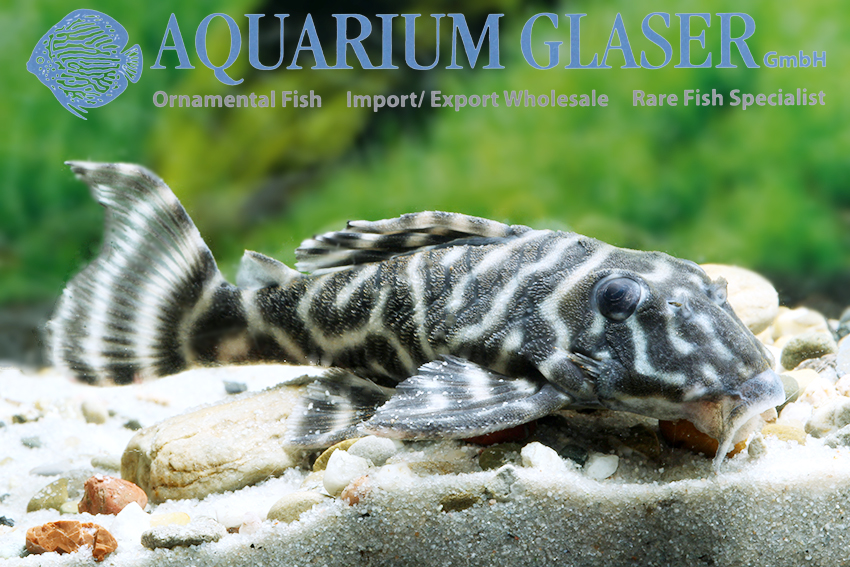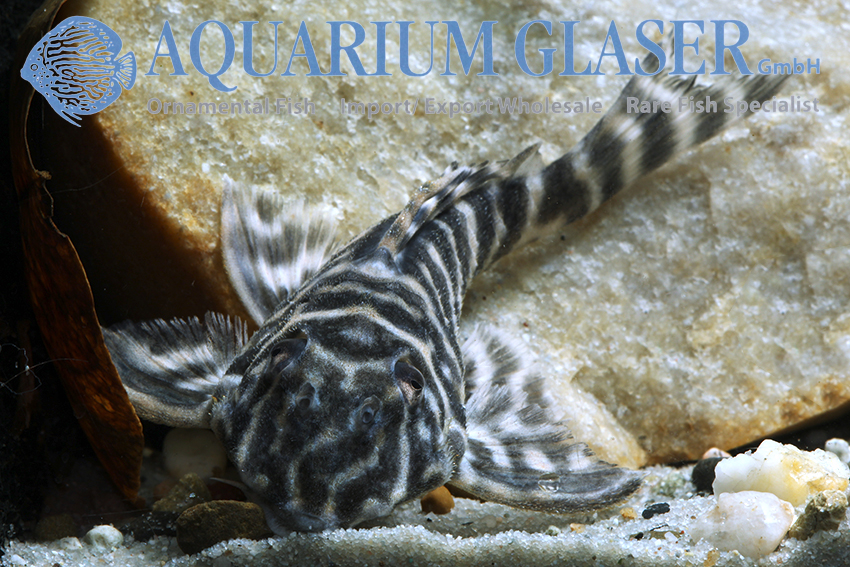The Hypancistrus catfishes with striped pattern are on the one hand a wonderful enrichment for the aquaristics, because they look beautiful, don’t grow too big and can be bred quite well, on the other hand they are constant cause for quarrel. Because in many cases it is hardly possible to determine them exactly. This is due to the fact that these catfishes are extremely variable in their markings and also vary greatly in body shape. In the case of the Rio Xingu species (L66 & Co.) it has already been established by molecular genetic studies that they frequently hybridize in nature.
The said applies in full extent also to L475, which we could import now. According to the exporters it originates from the Rio Nhamunda (Brazil), where ornamental fishes have been caught for a long time because of the very beautiful discus fishes that occur there. However, Hypancistrus are hard to catch without diving equipment, which is why the entire genus of these very conspicuous and by no means rare catfishes was not scientifically recorded until 1991.
There are not two specimens of L475, which have exactly the same pattern. Most animals have an irregular banding pattern of broad, dark bands on a white background, but there are also specimens where the dark bands are so broad that it looks as if in this case black animals have a pattern of white, thin bands. In most animals the dorsal fin has three horizontal bands, but there are also animals with a vertically striped dorsal fin. Typical for all individuals of L475 is that they have a white nuchal band running around the body from one ventral edge to the other, beginning at the base of the pectoral fins and continuing in most cases on the inner side of the fins, behind the spine ray. Furthermore, all animals have a white, suggestively W-shaped band just anterior to the base of the dorsal fin.
Like all Hypancistrus, L475 are mixed feeders, eating both plant and animal foods. The maximum length seems to be 12-14 cm. Such fish are kept in aquariums rich in hiding places and caves, with strong currents and good filtration and temperatures between 28 and 32°C. Too low temperatures are the most common care mistake with these fish. The water values are of secondary importance for the fish, but soft water with a pH around 6 is favorable, because less bacteria develop in this environment than in hard water with a pH around 8.
For our customers: the animals have code 26480-L 475-3 (8-10 cm) and 26480-L 475-4 (10-12 cm) on our stock list. Please note that we only supply wholesale.
Text & photos: Frank Schäfer





